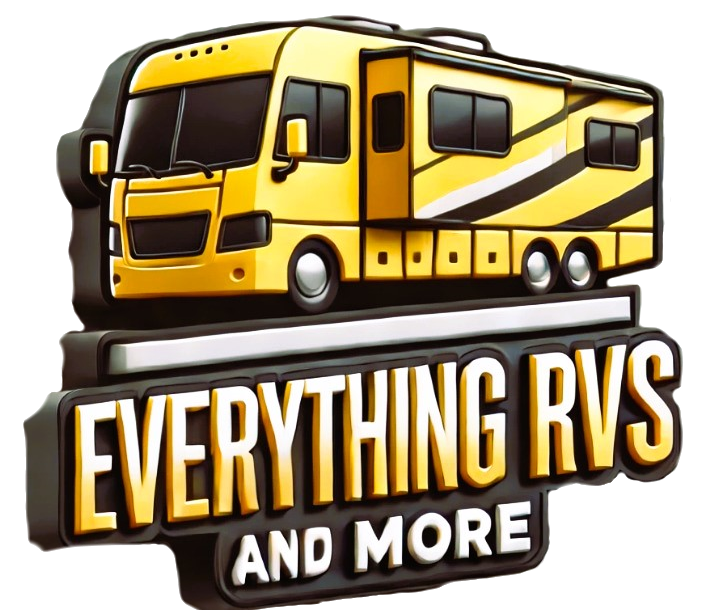Affiliate Disclosure: I earn commissions if you shop through the links below at no additional cost to you.
Last Updated on February 27, 2024 by Jeremy
Introduction
The allure of the open road, the serenity of nature, and the crackle of a campfire under the stars – the nomadic lifestyle, whether you’re in a cozy RV or a humble tent, is a siren call for adventurers seeking the unbeaten path. But, let’s face it, the cost of camping can sometimes make your wallet shiver more than a chilly night in the wilderness.
Fear not, fellow wanderers! In this guide, we’ll unravel the secrets of how to find free campsites, turning your journey into a budget-friendly odyssey without compromising on the magic of the great outdoors.

The Rise of the Nomads
As the world embraces a more nomadic lifestyle, the demand for affordable and off-the-beaten-path campsites has skyrocketed. Whether you’re a seasoned RV enthusiast or a nature-loving tent camper, the quest for the perfect free campsite is a common thread that binds us all.
Why Free Campsites?
Sure, plush campgrounds with amenities abound, but there’s a certain charm in discovering a secluded spot where the only sounds are the rustling leaves and distant wildlife. Plus, who doesn’t love the idea of saving some hard-earned cash for the next adventure?
In this guide, we’ll explore the art of finding free campsites, from tapping into the digital realm to connecting with local communities. So, buckle up, fellow nomads, as we embark on a journey through the digital wilderness and uncover the hidden gems where you can pitch your tent or park your RV without breaking the bank.
Researching Free Campsites
Embarking on the quest for the perfect free campsite requires a bit of digital finesse. In the era of smartphones and apps, your journey begins at your fingertips. Here’s how to navigate the digital wilderness:
Utilizing Dedicated Apps
In the vast landscape of camping apps, a few shining stars stand out, guiding you to hidden camping treasures:
1) iOverlander: Your Global Camping Companion

Overview: iOverlander is the adventurer’s compass, offering a vast database of campsites, including the coveted free gems. With real-time user-generated reviews and detailed information, it’s your virtual camping co-pilot.
Pro Tip: Explore user-contributed photos to get a sneak peek of potential campsites and make informed decisions.
2) The Dyrt: Discover Your Next Favorite Campsite

Overview: The Dyrt is a comprehensive app that caters to a wide range of campers, providing insights into both paid and free campsites. With detailed reviews, filters, and a vibrant camping community, it’s a valuable tool for every outdoor enthusiast.
Pro Tip: Use the filters to tailor your search based on your preferences and rely on community reviews for authentic experiences.
3) Campendium: Your Camping Encyclopedia

Overview: Campendium is your go-to camping encyclopedia, covering a wide range of campsites, including both paid and free options. With detailed site descriptions, photos, and a thriving community, it’s a treasure trove for campers.
Pro Tip: Dive into community reviews to gain insights into the latest conditions of campsites.
Remember, these apps are your digital scouts, but the real adventure begins when you blend technology with on-the-ground exploration. In the next section, we’ll delve into the world of national and provincial parks, uncovering the beauty of camping within these natural wonders.
National and Provincial Parks
National and provincial parks are not just natural wonders; they’re often untapped reservoirs of free camping opportunities. Here’s how to navigate these pristine landscapes:
Exploring Opportunities Within Public Parks
National and provincial parks aren’t just for day hikes and scenic drives; they can be your haven for a night under the stars. Consider the following:
- – Research Park Regulations: Before setting up camp, familiarize yourself with the specific regulations of the park. Some parks allow dispersed camping, while others may have designated areas.
- – Off-Season Bliss: Explore national and provincial parks during their off-season. Many offer reduced or waived camping fees during quieter months, giving you a chance to savor nature without the crowds.
- – Hidden Gems: Some parks have less-known areas where camping might be free or at a minimal cost. Connect with park rangers or local enthusiasts to discover these hidden gems.

Bureau of Land Management (BLM) and Crown Land
In the vast expanses of North America, Bureau of Land Management (BLM) lands in the U.S. and Crown Lands in Canada present unparalleled opportunities for free camping:
- – BLM Camping Etiquette: When camping on BLM lands, adhere to the “Leave No Trace” principles. Many sites may not have amenities, so come prepared with essentials.
- – Crown Land Adventures: In Canada, Crown Lands offer vast stretches for camping. Familiarize yourself with the regulations of the specific province you’re exploring, as rules can vary.
- – Extended Stays: BLM and Crown Lands often permit more extended stays compared to traditional campgrounds, allowing you to immerse yourself in the beauty of these wild landscapes.
By strategically navigating national and provincial parks, as well as BLM and Crown Lands, you’ll discover that nature’s bounty extends far beyond traditional campsites. In the upcoming section, we’ll unravel the charm of dispersed camping and the freedom it brings to the nomadic soul.
Dispersed Camping: Embracing the Wild
In the realm of free camping, dispersed camping stands out as the epitome of wilderness immersion. Here’s your guide to embracing the freedom of dispersed camping:
Defining Dispersed Camping
Dispersed camping is like the wild west of camping – no designated sites, no amenities, just you and nature. Understanding the essence of dispersed camping is key:
- ~ No Reservations Required: Forget about booking a site. Dispersed camping allows you to set up camp in non-designated areas, giving you the freedom to choose your perfect spot.
- ~ Off-the-Grid Bliss: If you’re yearning for solitude and a genuine connection with nature, dispersed camping takes you off the grid. Disconnect from the hustle and bustle, and savor the simplicity of the wild.
- ~ Leave No Trace: With great freedom comes great responsibility. Adhering to the Leave No Trace principles is paramount in dispersed camping. Minimize your impact on the environment to preserve these pristine areas for future adventurers.
Tips on Finding Suitable Dispersed Camping Areas
Finding the ideal spot for dispersed camping requires a blend of exploration and preparedness:
- ~ Consult Ranger Stations: Local ranger stations often have valuable insights into dispersed camping areas. Seek their advice on current conditions, regulations, and recommendations.
- ~ Study Maps and Satellite Imagery: Equip yourself with detailed maps and satellite imagery to identify potential dispersed camping areas. Look for clearings, accessible trails, or open spaces away from sensitive habitats.
- ~ Road Less Traveled: Venture off the beaten path. Remote forest roads, BLM areas, and national forests are often havens for dispersed camping. Be prepared for unpaved roads and minimal signage.
Responsible Practices While Dispersed Camping
Embracing the wild comes with a responsibility to preserve its beauty:
- ~ Pack It In, Pack It Out: Leave no trace of your presence. Pack out all waste, including trash and human waste, and dispose of it properly.
- ~ Respect Wildlife: Maintain a respectful distance from wildlife. Observing from afar ensures both your safety and the natural behavior of the animals.
- ~ Campfire Caution: If fires are allowed, exercise caution. Use established fire rings, keep fires small, and fully extinguish them before leaving.
Dispersed camping offers an unparalleled sense of freedom, but with great freedom comes the need for great responsibility. In the following section, we’ll explore the power of local insights and networking in uncovering the best-kept secrets of free campsites.
For more information on BLM and dispersed camping rules and tips, visit this website: Camping | Bureau of Land Management (blm.gov)
Safety and Leave-No-Trace Principles: Camping Responsibly
As you roam the great outdoors in search of free campsites, ensuring safety and practicing Leave-No-Trace principles becomes not just a choice but a responsibility:

Prioritizing Safety When Choosing Free Campsites
Safety should always be at the forefront of your camping endeavors:
- * Visibility and Accessibility: Choose campsites that are easily accessible and offer good visibility. Avoid secluded spots that might compromise your safety.
- * Weather Awareness: Stay informed about the weather conditions of the area. Sudden changes in weather can impact your camping experience, so be prepared for all possibilities.
- * Wildlife Precautions: Research the local wildlife and take necessary precautions. Store food securely, avoid feeding wildlife, and understand the potential risks in the area.
Educating Readers on Leave-No-Trace Principles
Preserving the pristine beauty of nature is a collective responsibility. Here’s how to leave no trace:
- * Pack It In, Pack It Out: Dispose of all waste properly. This includes not only your trash but also human waste. Use designated facilities or follow proper burial techniques.
- * Minimize Campfire Impact: If fires are allowed, keep them small, use established fire rings, and fully extinguish them before leaving. Consider using a portable stove to minimize your impact.
- * Respect Flora and Fauna: Stay on established trails and campsites to avoid damaging local flora. Respect wildlife by observing from a distance and refraining from disturbing their habitats.
Encouraging Responsible Camping Practices
Camping responsibly is not just a guideline; it’s a commitment to the environment and future generations of adventurers:
- * Lead by Example: Demonstrate responsible camping practices in every adventure. Your actions can inspire others to follow suit.
- * Educate Fellow Travelers: Share the importance of Leave-No-Trace principles and safety measures with fellow travelers. Encourage a collective effort to preserve the beauty of our natural spaces.
In our concluding section, we’ll recap the key insights and encourage readers to share their own experiences and tips for finding free campsites. It’s not just about the destination; it’s about the journey, and every responsible step ensures the path remains open for all.
Conclusion: Embrace the Wilderness, Leave Only Footprints
In the pursuit of free campsites, we’ve traversed digital landscapes, explored the wonders of national and provincial parks, embraced the untamed beauty of dispersed camping, tapped into local insights, and prioritized safety and environmental responsibility.

As your virtual guide in this odyssey, here’s a final rallying call to all fellow nomads:
The Tapestry of Exploration
The nomadic spirit is a tapestry woven with threads of exploration, curiosity, and a touch of wildness. In the search for free campsites, we’ve uncovered not just secluded spots under the stars but a deeper connection with nature and the communities that call it home.
Your Digital Companions
From the digital realm to the heart of nature, dedicated apps like iOverlander, FreeRoam, and Campendium have been your trusty companions. They’ve guided you to hidden gems, shared the wisdom of fellow travelers, and opened doors to landscapes waiting to be explored.
The Allure of Public Lands
National and provincial parks, BLM lands, and Crown Lands have beckoned, offering a canvas for your outdoor dreams. Whether nestled beneath towering trees or gazing at a horizon unspoiled by city lights, these public lands have become the backdrop to your nomadic tales.
Freedom in Dispersed Camping
Dispersed camping has invited you to dance with the wild, to choose your spot and revel in the freedom of unmarked territories. The responsibility that comes with this freedom echoes the ethos of leaving no trace, preserving these spaces for generations to come.
Local Insights: The Heartbeat of Exploration
Through local insights and networking, you’ve discovered that the pulse of exploration beats strongest in the hearts of communities and fellow travelers. The warmth of shared stories, the generosity of advice, and the joy of connecting with those who share the love for the road have enriched your journey.
Safety and Responsibility: Your North Star
Amidst the breathtaking landscapes, safety has been your compass, and Leave-No-Trace principles your guiding star. With each step, you’ve ensured that your presence honors the delicate balance of nature, leaving only footprints and memories.
A Call to Nomads: Share Your Tales
As the curtain falls on this guide, it’s not just an end but a call to action. Share your own tales of free camping discoveries, unveil the secrets you’ve stumbled upon, and inspire fellow nomads to embark on their own journeys.
In the end, the quest for free campsites is not just about finding a spot to rest; it’s about weaving your story into the fabric of the landscapes you traverse. So, fellow nomads, let the road unfold before you, and may each campsite be a chapter in your grand adventure.
Safe travels, leave only footprints, and may the wilderness always welcome you home.
Do you have questions or comments about this article? Perhaps you have a few secret free camping spots you’d like to share with our readers! If so, don’t hesitate to drop a comment




.jpg/:/cr=t:5.56%25,l:0%25,w:100%25,h:88.89%25/rs=w:1240,h:620,cg:true)



Leave a Reply